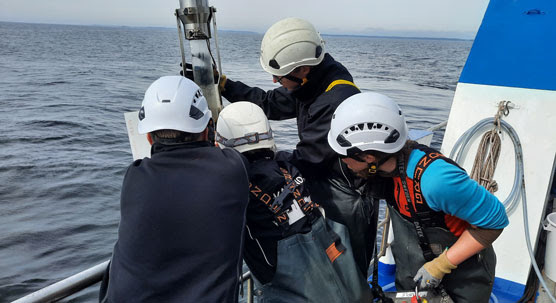O2 levels in Bothnian Sea seem to on wane
Published : 24 Sep 2021, 22:44
Updated : 10 Apr 2024, 23:51
The oxygen levels in deep-water regions of the Bothnian Sea appear to continue to deteriorate, said the Finnish Environment Institute (SYKE) in a press release on Friday referring to Baltic Sea monitoring cruises.
Monitoring cruises undertaken in August by the Finnish Environment Institute, however, showed that the Gulf of Finland has recovered from the deterioration caused indirectly by salt pulses in the Baltic Sea in the mid-2010s.
Oxygen levels in the main basin of the Baltic Sea and the Bothnian Sea were quite similar this summer to that in the previous summers 2019 and 2020. In the main basin, the water layer below a depth of 70 to 80 metres is anoxic.
In the Bothnian Sea, the oxygen situation has deteriorated since 2000. Oxygen is still found in deep waters of the Bothnian Sea, but the declining trend in oxygen levels is worrying, especially as phosphorus levels have risen and large-scale blue-green algal blooms have become more common.
Oxygen concentrations in the Åland Sea basin were lower than in previous years. In the Archipelago Sea, oxygen levels in water near the sea floor were close to long-term averages with the exception of southern parts of the sea, where the levels were below long-term averages.
The highest concentrations of nutrients in the Archipelago Sea were also measured in the deep waters of the southern part. Lowered oxygen levels and increased nutrient concentrations are likely due to water from the main basin.
Phosphorus concentrations in the deep waters of the Baltic Sea main basin have continued to increase. Lack of oxygen in these regions prevents phosphorus from being bound in the bottom sediment.
Weather-regulated flows between the Gulf of Finland and the main basin of the Baltic Sea cause fluctuations in the state of the Gulf, which makes it difficult to discern the impact of emission reductions.
Positive development in the coastal waters of the Gulf of Finland, record-high nutrient concentrations in the central part
Between 2014 and 2016, several pulses of salty water flowed into the Baltic Sea from the North Sea. The detrimental effects of salty, oxygen-deficient and nutrient-rich water displaced by the salt pulses were evident in the oxygen situation in the Gulf of Finland in August 2019.
In 2021, oxygen levels in the open sea areas of the Gulf of Finland were worse than in summer 2020, but still better than in 2019.
Similarly, phosphorus concentrations on the seafloor were higher than in 2020 but mostly lower than in 2019.
Concentrations of biologically available phosphorus and nitrogen measured in the central part of the Gulf of Finland in August were the highest in the 50 years of measurements. The high concentrations are likely explained by water from the main basin of the Baltic Sea trapped in the Gulf, to which nutrients released from the seafloor have accumulated.
In the coastal waters of the Gulf of Finland, the state of the seafloor was among the best seen during the 20 years of measurements.
At the majority of observation stations, surface sediment was oxygenated and benthic animals were present. The state of the seafloor has improved in the outer archipelago and near the open sea. In contrast, the state of small coastal depressions in the inland archipelago with low water turnover has not improved during the monitoring period.
Phosphorus load into the Gulf of Finland has decreased by about 60 percent since 2000. Despite this, concentrations of chlorophyll a in the eastern Gulf of Finland, indicating the amount of algae, are unchanged from the early 1990s.
At the same time as load has decreased, the halocline of the main basin of the Baltic Sea has increased in elevation, and large amounts of phosphorus have flowed into the Gulf of Finland with deep water from the main basin.
The decrease in phosphorus load may partly explain the reversal of eutrophication in the eastern Gulf of Finland, where, in fact, the effects of the large emission reductions in Russia should be first observed.
Research vessel Aranda makes four monitoring cruises on the state of the Baltic Sea annually. In addition, a smaller vessel is used to monitor the coastal waters of the Gulf of Finland in August.
The cruises are part of the Finnish Environment Institute’s and the Finnish Meteorological Institute's monitoring of long-term changes in the state of the Baltic Sea as part of the Monitoring Program for Finland’s Marine Strategy and the joint HELCOM Monitoring Programme.


